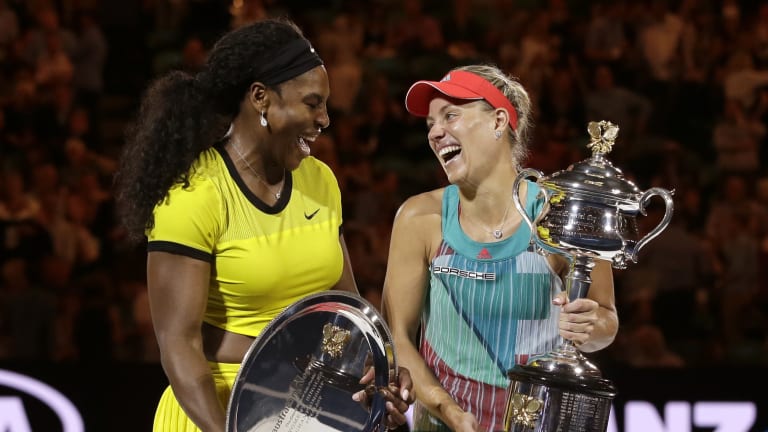—Serena got off to a slow start, missing mid-court shots that she would normally put away. While she would find her range as the match progressed, the putaways proved to be a problem throughout. Unable to belt the ball past the speedy Kerber, Serena found herself trying to finish points at the net much more often than usual. That was part of her game plan with coach Patrick Mouratoglou, but it didn’t work; Serena won just 15 of 32 points at net. She also made just 53 percent of her first serves, and won a surprisingly low 69 percent of those points. Kerber, not known for her service prowess, won 73 percent of her first-serve points.
In her six previous matches, Serena hadn’t dropped a set. She had lost just five games to Maria Sharapova in the quarterfinals and four to Agnieszka Radwanska in the semis. Did she peak too soon? Her best tennis had come against the fifth-seeded Sharapova, who was her opponent in the Aussie Open final the previous year. Serena never reached that level in this final.
—Kerber said that before the year began, she and coach Torben Beltz worked on getting her to be more aggressive. That was certainly part of her rise to No. 1. In this match, though, it wasn’t all-out aggression that helped Kerber. Most of the time she chased Serena’s shots, and the biggest difference between the two players was the number of unforced errors each committed—Serena had 46, while Kerber made just 13. It was Kerber’s counter-punching, in the form of her brilliant passing shots, that won her this match, not her first-strike abilities.
Still, you can see that Kerber had an offensive plan as well, and that she executed it with control and margin. Twice in this clip she slides her serve to Serena’s backhand, goes back in that direction with a crosscourt forehand and finishes the point with a crosscourt backhand to the other corner. When Kerber does play defense, she’s able to angle the ball enough that Serena is often forced to hit from outside the sidelines. That gave Kerber more room to follow up with a passing shot.
—When Serena won the second set and punctuated it with a “Come on!” it seemed that the party was over for Kerber. Now, surely, Serena would raise her game and Kerber would be satisfied with second place. Something like that would happen when these two met in the Wimbledon final five months later. On Centre Court, Kerber would fight Serena to a draw for the first 10 games of the opening set, only to lose control of her highly-controlled game over the last two and never recover.
